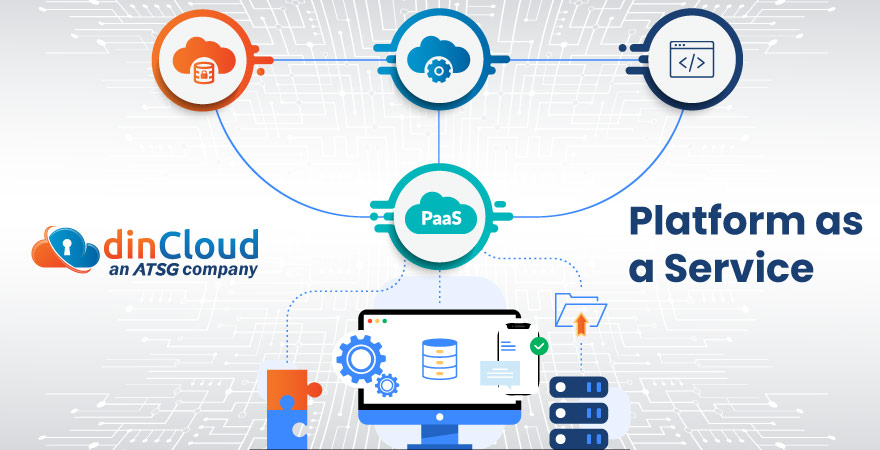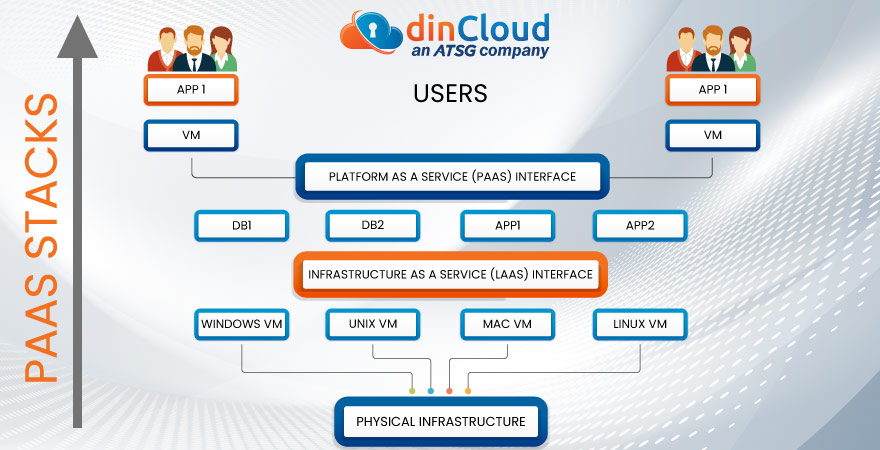Platform as a Service (PaaS) is a Cloud Computing Deployment model in which a third-party Cloud Service Provider delivers an integrated set of applications or a full solution stack over an internet connection. It is basically used for developing enterprise class applications. PaaS allows the end user freedom from any kind of on-premise IT infrastructure and the provider will host the hardware or software on its own infrastructure.

The solution stack is a set of components or software systems which are then used for the development of a full product or service. It can be some sort of a web application that utilizes an Operating System, Web Server, database or a programming language. Generally, the solution stack should be capable of delivering Operating System, Middleware, database or application.
How PaaS Evolved?
PaaS arose from Software as a Service, which involves the utilization of internet to host various softwares. PaaS lies at the center of Cloud Computing’s layers.
- Software as a Service (SaaS)
- Platform as a Service (PaaS)
- Infrastructure as a Service (IaaS)

The above diagram visualizes the connection between PaaS and IaaS. At the base level, Virtual Machines are provisioned by IaaS interface and a management software is used for its configuration. Additional softwares are used to manage the solutions and the designed application is delivered to the user through Virtual Interface.
In PaaS delivery model, user has the capability to rent a virtualized server to run their applications or design, develop, test, deploy and host applications.
Where is PaaS Used?
Basically, PaaS is used in multiple scenarios, depending upon the organization needs.
Development
PaaS provides a framework to developers through which they can develop or deploy custom cloud-applications. The model has built-in software components which can assist the developers. It assists in the reduction of coding time.
Business Intelligence
Majority of the PaaS providers offer additional tools, which can allow the organizations to analyze the business patterns and find business data insights. This will not only assist in forecasting, but also in investment returns and business decisions.
How PaaS Relates To Virtual Desktop?
A Virtual Desktop means that a user’s desktop is hosted on a remote server, rather than a local PC hardware. A desktop Virtualization software keeps the operating system, applications and data through a remote server.
The remote server uses a software, “Hypervisor” to run Virtual Desktops and create a “Virtual Machine” which setups the user’s desktop environment. User can access their remote desktops from any internet available device.
It highly relates to PaaS in terms of the offered services. Both PaaS and Virtual Desktops are similar in terms of being provisioned under a Virtual Machine and are hosted through a Remote Server. Virtual Desktop can host data, applications and an entire operating system. On the other hand, PaaS offers users a whole platform, not just to run the existing applications but has the additional service of designing, development, testing, deploying and hosting a new business application, according to needs of the user.
Both solutions are the best in terms of salability, increase workload mobility, continuously evolving into Digital Transformation with Cloud Computing and transforming IT infrastructures of organizations. Gone are the days when organizations had to look up for an expensive and highly time occupying hardware deployment. Now, you can enjoy bundles of data storage, added security, customization, increased workforce flexibility and mobility through Platform as a Service and Virtual Desktop.


